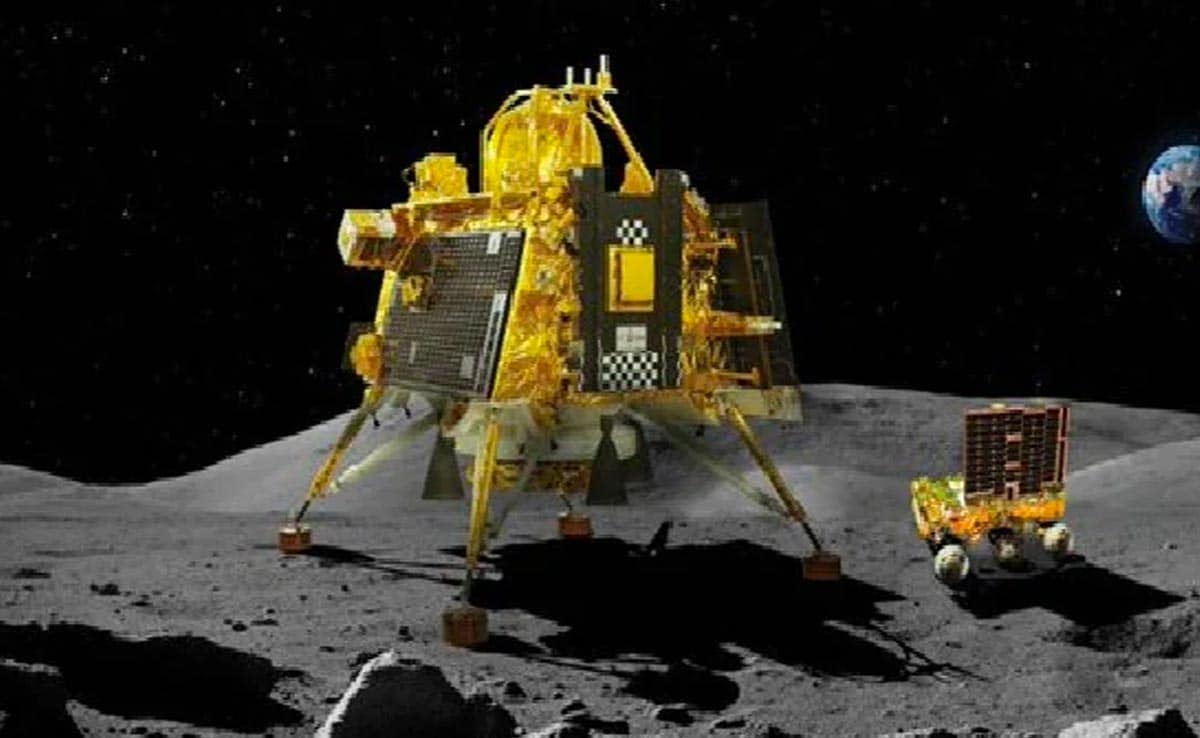Chandrayaan 3: India Becomes the First Country To Land On Moon’s South Pole
Okay, imagine the Moon as a big round ball in the sky. It’s like a giant rock that goes around the Earth. Now, there is a special part of the Moon called the South Pole. It’s like the bottom part of the Moon.
India, which is a country on Earth, sent a special spacecraft to land on this South Pole of the Moon. It’s like a big robot that can fly in space. No other country has ever done this before, so India became the very first country to do it! It’s a really big achievement because it’s like reaching a place that no one has ever been to before.
Introduction to Chandrayaan 3 Mission
The Chandrayaan 3 mission, the third lunar exploration mission by the Indian Space Research Organisation (ISRO), is a significant endeavor in India’s space exploration journey. Building upon the successes of the previous Chandrayaan missions, this ambitious project aims to further enhance our understanding of the moon’s surface and its composition. With advanced technology and a renewed focus on scientific research, Chandrayaan 3 holds great promise for unraveling the mysteries of the lunar landscape and paving the way for future space exploration. In this article, we delve into the details of the Chandrayaan 3 mission, its objectives, key components, challenges, and potential impact on scientific advancements and future space missions.
1. All the details about Chandrayaan 3 Mission
History and Overview
India’s Chandrayaan series of lunar missions has been making waves in the space exploration scene since its inception. Building upon the success of Chandrayaan 2, the Indian Space Research Organisation (ISRO) is all set to launch Chandrayaan 3, their third lunar mission. It’s like the Bollywood sequel we never knew we needed, but now can’t wait to watch.
Significance and Objectives
Just like its predecessors, Chandrayaan 3 has some lofty goals for its lunar adventure. The mission aims to further our understanding of the moon’s geology, mineralogy, and its evolution by conducting extensive scientific experiments. It also plans to demonstrate India’s prowess in landing a rover on the moon’s surface, much like the cool kids from NASA and other space agencies. Watch out, extraterrestrial beings, the Indians are coming.

2. Background and Objectives of the Chandrayaan 3 Mission
Previous Chandrayaan Missions
Before we dive into the details of Chandrayaan 3, let’s take a quick trip down memory lane. Chandrayaan 1, India’s first lunar mission launched in 2008, primarily focused on mapping the moon’s surface and studying its mineral composition. Chandrayaan 2, its ambitious sequel in 2019, aimed to land a rover on the lunar south pole but had a bit of a rough landing. Nevertheless, it managed to capture the imagination of millions around the world.
Lessons Learned and Improvements
With each mission, ISRO has been gathering valuable insights and experience. They’ve taken the lessons learned from Chandrayaan 2, made the necessary improvements, and are now ready to rock it with Chandrayaan 3. It’s like they say, “third time’s a charm,” and ISRO is determined to prove that statement right.
3. Key Components and Technology of Chandrayaan 3
Lunar Lander
The star of the show is the lunar lander, the vehicle that will make a gentle touchdown on the moon’s surface. Chandrayaan 3’s lander is equipped with advanced technology to ensure a successful landing, and hopefully, it won’t take any unexpected detours into a lunar pothole this time.
Lunar Rover
Joining the party is the lunar rover, a trusty explorer that will traverse the moon’s surface and gather valuable data. This pint-sized vehicle will be packed with scientific instruments, ready to uncover the moon’s well-kept secrets. It’s like having your own mini-R2D2 exploring a whole new world right before your eyes.
Orbiter
Completing the trio is the orbiter, the unsung hero that will orbit the moon and provide crucial communication and navigation support to its lunar companions. Think of it as the mission’s personal GPS system, ensuring the rover and lander stay on track during their lunar escapades.

4. Mission Timeline and Launch Details of Chandrayaan 3
Planning and Preparation
Behind every successful mission lies careful preparation and arrangement. ISRO is leaving no moon-rock unturned, meticulously strategizing each step of the Chandrayaan 3 mission. From fine-tuning the technology to training the team, their attention to detail is both impressive and inspiring.
Launch Vehicle
To propel Chandrayaan 3 towards the moon, ISRO plans to use its trustworthy GSLV Mark III launcher. This powerful rocket has already proved its worth by successfully delivering payloads into space, and now it’s ready to add another feather to its cap by launching India’s lunar dreams higher than ever before.
Mission Duration
While the exact mission duration is yet to be announced, it’s safe to say that once Chandrayaan 3 embarks on its lunar adventure, it will spend a considerable amount of time gathering data, exploring the moon’s surface, and making scientists around the world jump with joy. Keep your eyes glued to the sky, as this is going to be one epic space tale.
And there you have it, all the juicy details about Chandrayaan 3. Get ready to witness India’s continuation of its lunar saga, as they aim to make their mark on the moon once again. It’s like watching a thrilling movie franchise unfold, but in real life. Who said science can’t be exciting? Hold on tight, because Chandrayaan 3 is about to take us on a wild cosmic ride.
5. Scientific Experiments and Discoveries
Payload Instruments
One of the most exciting aspects of the Chandrayaan 3 mission is the array of payload instruments it carries. These instruments are designed to conduct various scientific experiments and help us unravel the mysteries of the moon. From cameras to spectrometers, the spacecraft is equipped with state-of-the-art tools to gather data and capture detailed images of the lunar surface.
Objectives and Expected Findings
The primary objective of the Chandrayaan 3 mission is to further our understanding of the moon’s composition, geology, and origin. By analyzing the data gathered by the payload instruments, scientists hope to gain insights into the moon’s water resources, potential mineral deposits, and even the presence of certain gases in its atmosphere.
Through these experiments, we anticipate discovering crucial information about the moon’s evolution, its geological activities, and its relationship with Earth. The findings from this mission have the potential to revolutionize our understanding of not only the moon but also the formation and development of other rocky bodies in our solar system.
6. Challenges and Risks for Soft Landing in South Pole of the Moon
Technical Challenges of Chandrayaan 3
Embarking on a mission to the moon is no small feat, and the Chandrayaan 3 mission does come with its fair share of challenges. Technical hurdles include the precise navigation and landing of the spacecraft on the lunar surface, ensuring the functioning of the payload instruments in the harsh lunar environment, and establishing robust communication between the spacecraft and mission control.
Operational Risks and Mitigation Strategies
In addition to technical challenges, there are operational risks that need to be carefully managed. The delicate nature of space missions means that unforeseen issues can arise during launch, lunar transfer, or landing. However, the Indian Space Research Organisation (ISRO) has a track record of successfully addressing risks and implementing effective mitigation strategies.
ISRO’s meticulous planning, thorough testing, and rigorous quality control measures help minimize operational risks. Additionally, the organization collaborates with international partners to leverage expertise and share resources, further enhancing the chances of mission success.

7. Collaborations and International Participation
Collaborating Organizations
Space exploration is a global endeavor, and the Chandrayaan 3 mission recognizes the importance of international collaboration. ISRO has fostered partnerships with various organizations, including NASA, ESA, and other space agencies around the world. These collaborative efforts enable the sharing of scientific knowledge, technological expertise, and resources, enhancing the overall success and impact of the mission.
Contributions and Benefits
Collaborating with international organizations brings numerous benefits to the Chandrayaan 3 mission. It allows for the pooling of resources, sharing of data and analysis, and collaboration on scientific publications. Moreover, the exchange of ideas and expertise through these partnerships accelerates scientific advancements and fosters a spirit of cooperation and shared exploration.
By working together, countries can achieve more collectively than they could individually, and the Chandrayaan 3 mission is a prime example of how international collaboration drives innovation and expands our collective knowledge about the moon and beyond.
8. Impact and Future Implications of the Chandrayaan 3 Mission
Scientific Advancements
The Chandrayaan 3 mission has the potential to make significant scientific advancements. By deepening our understanding of the moon’s composition, geology, and water resources, we can unlock key insights into the mysteries of our closest celestial neighbor. These advancements not only contribute to lunar science but also have implications for our understanding of planetary formation and the potential for human habitation in space.
Inspiration and Space Exploration Future
In addition to its scientific impact, the Chandrayaan 3 mission serves as a source of inspiration for future generations. By pushing the boundaries of space exploration, India and its partners demonstrate the limitless possibilities that lie beyond our planet. The knowledge, technology, and experience gained from this mission will pave the way for future lunar and planetary missions, fueling a continued interest in space exploration and expanding humanity’s horizons.In conclusion, the Chandrayaan 3 mission represents a remarkable leap forward in India’s space exploration endeavors. With its ambitious objectives, advanced technology, and international collaborations, this mission has the potential to unlock new scientific discoveries and shape the future of lunar exploration. As we eagerly await the launch and progress of Chandrayaan 3, the mission stands as a testament to human curiosity and our relentless pursuit of knowledge. Through this remarkable endeavor, we inch closer to unraveling the mysteries of the moon and expanding our horizons in the vastness of space.

If you want to build your website in an affordable price contact: www.nextr.in
Read this: How AI Plays An Important Role In Social Media Growth?
















